Wisconsin may not be at the top of your mind when you think of great places to find stones, but perhaps it should be. There’s an outstanding variety of gemstones and minerals found in this state, especially in the sulfide group but spread across a wide part of the mineral kingdom.
You just need to know what’s there and where to look. So, let’s take a look at some of the rocks, minerals, and gemstones of Wisconsin.
Minerals and Gemstones Found In Wisconsin
1. Sphalerite
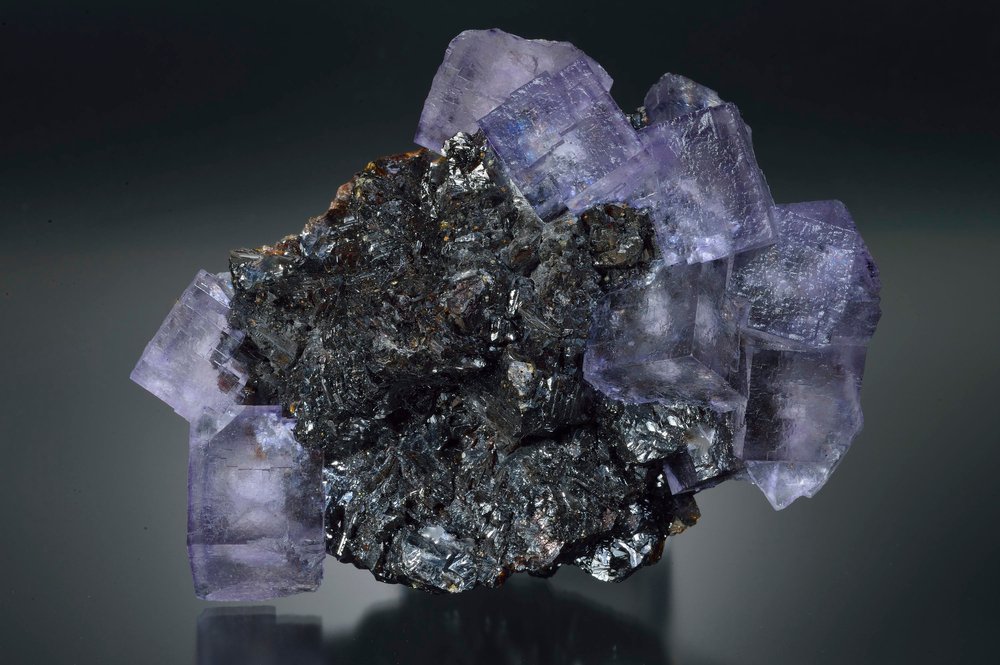
Sphalerite is the primary ore of zinc, taking the form of cubic crystals of zinc sulfide. It’s a common find in areas that previously had hydrothermal vents in the past, and it’s a good indication that other related minerals are nearby. The sulfides tend to stick together, which is good news for collectors.
Commonly, sphalerite which appears by itself will be in the form of glossy black cubic crystals. More pure versions of the mineral will be a red, transparent crystal. These are sometimes cut as curiosity gemstones for collectors but the material is too soft for any real application in jewelry. Its main use is still as a primary ore for zinc.
The sphalerite in Wisconsin tends to occur distributed through other rocks or as small clusters of black crystals. These clusters can look great, but they aren’t among the better samples of the mineral available. However, it’s easy enough to find, especially in the southwestern portion of the state.
The best samples seem to come from the area around Dodgeville in older quarries and mines.
2. Galena
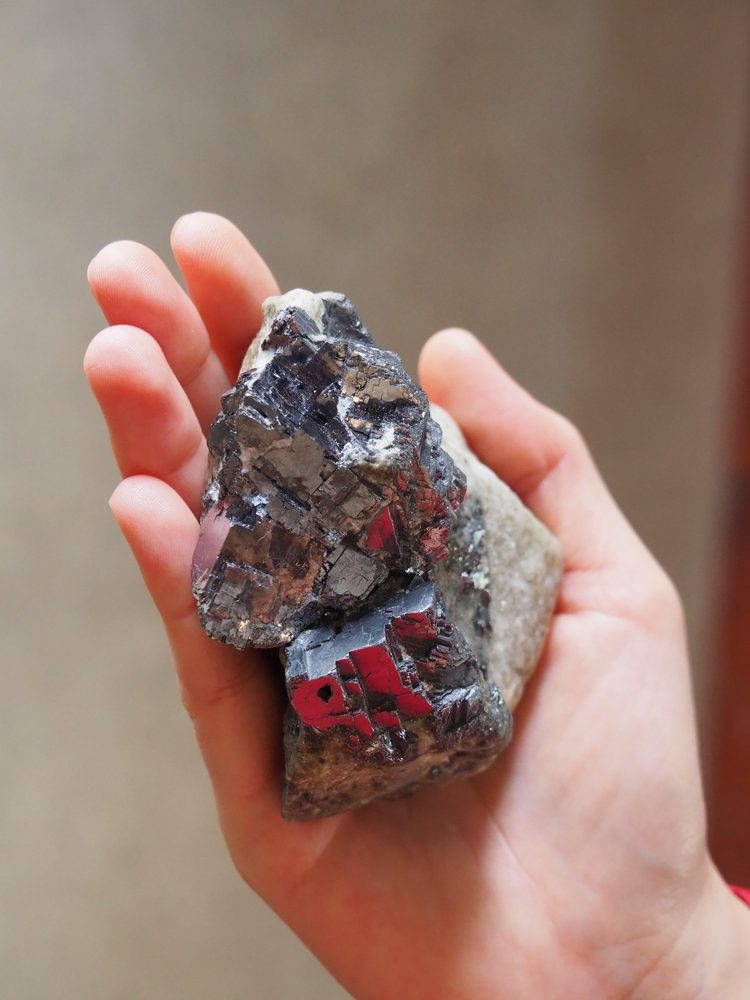
Galena is another of the minerals associated with ancient hydrothermal activity. In this case, galena is lead sulfide. It’s the primary ore of lead, which has a variety of different applications despite its inherent toxicity. Galena is safe to handle, but you should wash your hands afterward and wear a mask if you do any work that will put galena dust in the air.
Some galena is argentiferous, meaning that it bears silver locked in its structure. This lends a lot more economic importance to the mineral than you’d suspect. Galena takes the form of cubic or octahedral crystals, usually opaque and glossy black. It’s also the state mineral of Wisconsin, owing to past importance to their economy.
The galena from Wisconsin is typical of the material, and it’s a common find in the southwest portion of the state. It’s often a dusty grey instead of shiny, and galena isn’t a mineral you want to be sanding on to achieve a better gloss. It’s still worth looking for a sample, especially with the plethora of minerals in the same regions.
The area around Dodgeville in old mines and quarries is the best spot to look, but there’s galena spread throughout most parts of the state in smaller amounts.
3. Azurite
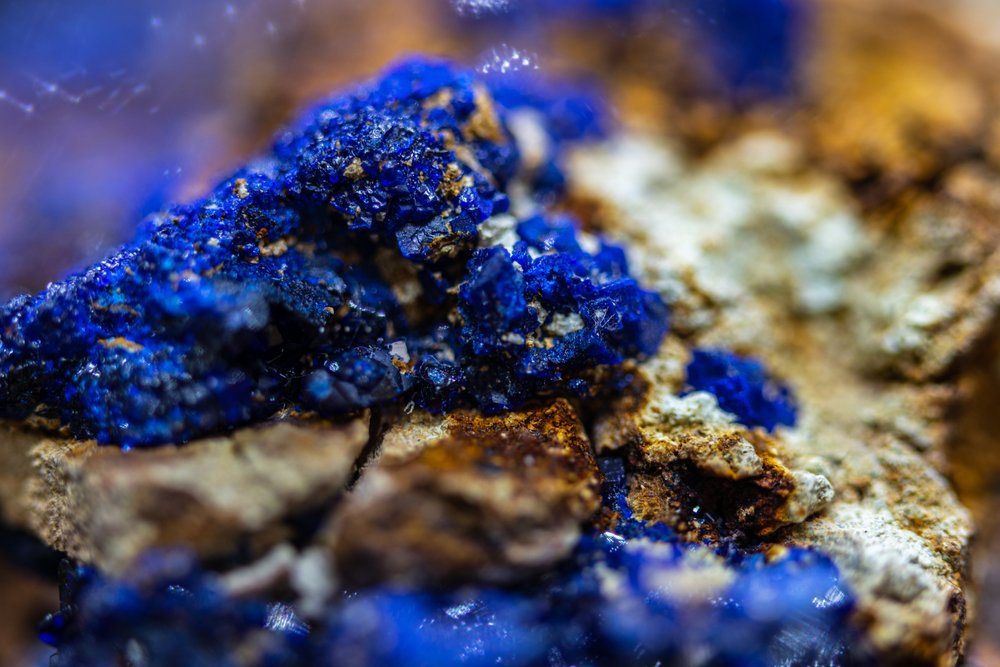
Azurite is a blue mineral that’s often found in copper-bearing regions. It’s one of the more common transitional finds in these areas but it sometimes occurs as crystals on its own. More often it’s found as a component of other rocks, in combination with minerals like chalcopyrite and malachite.
Azurite has been used as a pigment since ancient times since it easily changes color on exposure to common materials like egg yolk. Even how finely ground the material was could effect the tint, and it was prized for its deep blue. In older paintings azurite that was previously a deep sapphire color is often blue-green, owing to the oxidation of the azurite into malachite over time.
Azurite is part of the complex of minerals that make up copper mines in Wisconsin. In addition to this material, you can also find malachite and chalcopyrite in the same places. Copper minerals produce some incredible copper, and even native copper shows up in Wisconsin’s mines.
Those looking would be best served to check the areas to the east of Mineral Point. Make sure you have permission but the wealth of copper mines in the area can yield some interesting minerals when you have access.
4. Staurolite
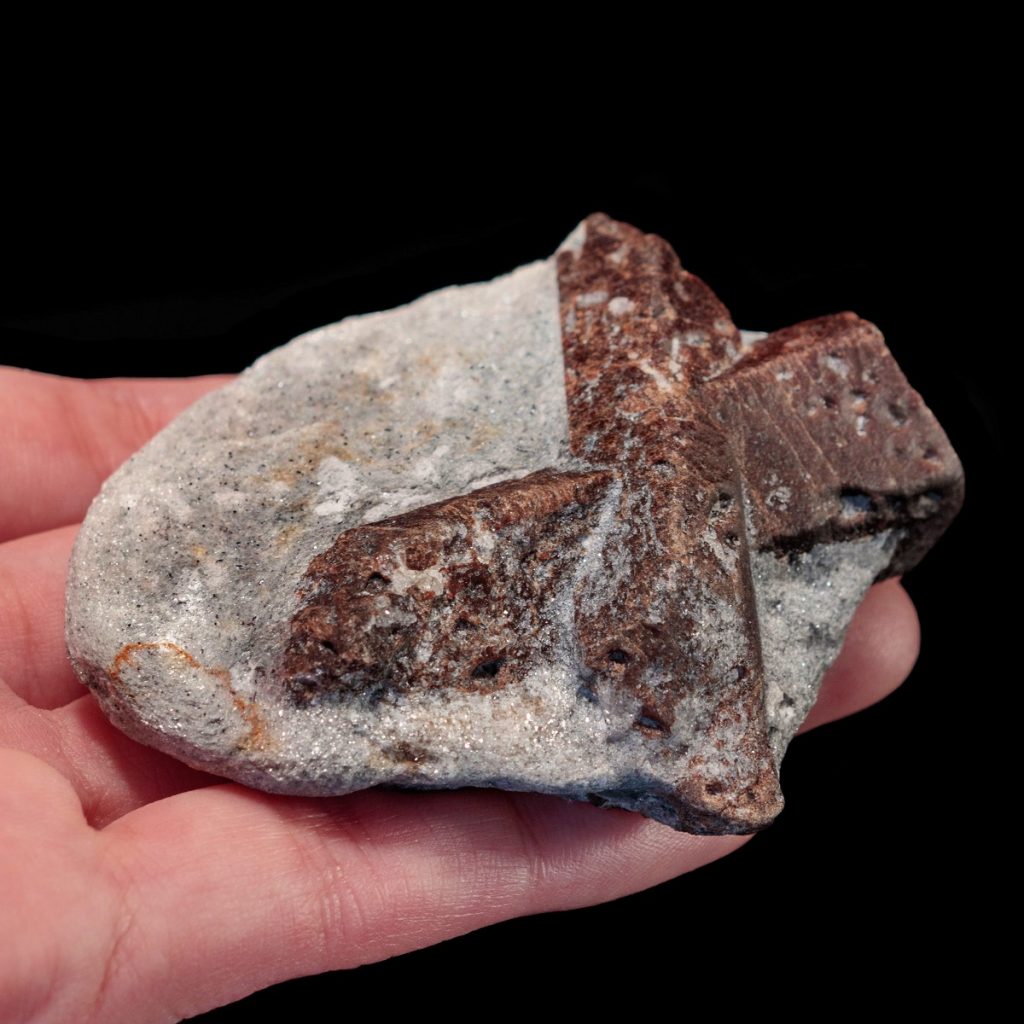
Staurolite is the mineral responsible for the so-called “fairy crosses.” It’s a simple silicate crystal that often forms with a twin at right angles. This is known as twinning cruciform penetration, and it’s the main reason the stone is sought after by collectors. The mineral has no real use aside from its unique look and texture, which makes it a common find in the rock trade.
Staurolite crosses are sometimes altered to make the angle better or the surface smoother. However, it’s also easy to mistake a natural crystal for a cut one thanks to the striations on the crystalline faces. Pulling one from the ground yourself is the best way, but tool marks can usually be differentiated with a loupe and the mineral sample in hand. Detection via a picture is sketchy at best.
Staurolite from Wisconsin is fairly typical. It’s a brown material that usually has a penetrating crystal at some angle between 45 and 90 degrees. It’s not the most common material in the region but the crystals do turn up in several locations. Staurolite is usually found in schist in Wisconsin.
The best places to check out appear to be around the town of Merill and to the north a bit in local schists.
5. Diamond
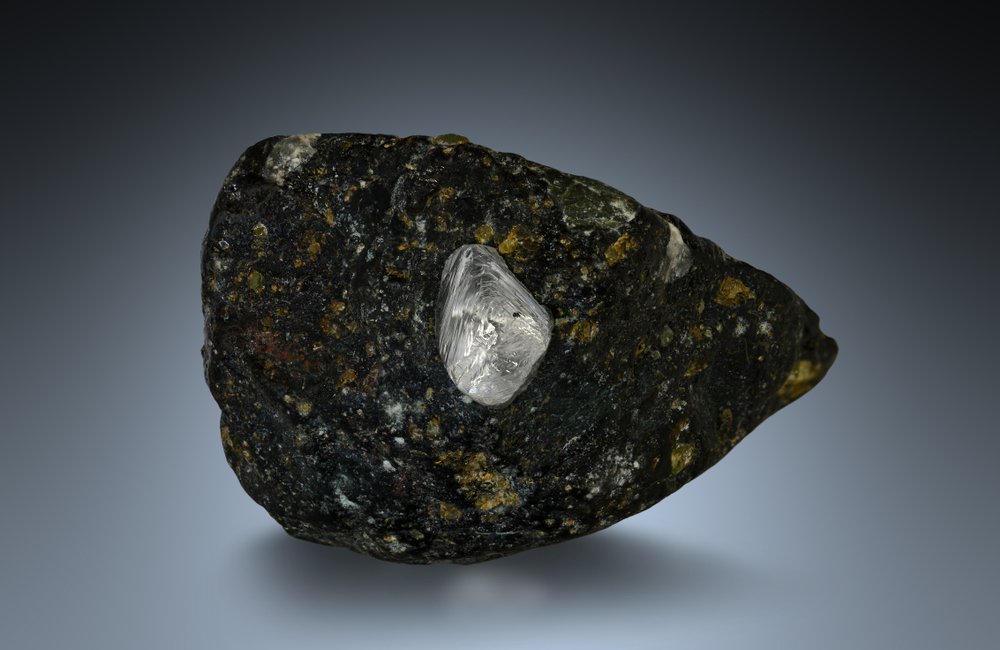
Several confirmed diamonds have been pulled from the earth in this state. It’s actually a source of some speculation since the only bedrock known to house diamonds is kimberlite. There isn’t a primary source of kimberlite known in Wisconsin, the closest is the Lake Ellen kimberlite in the upper peninsula of Michigan.
Diamonds are the hardest known mineral, with an outstanding Moh’s of 10.0. For lapidaries, diamond is important since it’s the main abrasive used on harder materials like beryl and corundum. Files, bits, and other tools made of bonded diamond dust are key to our work.
Wisconsin has a history of diamonds being found, but the bedrock remains unknown. Most people speculate that any diamond-bearing kimberlite would have to be further north, with erosion carrying the stones south. It’s a reasonable theory, especially since glacial action is known to have deposited material from the Great Lakes hundreds of miles South.
The area around Diamond Bluff and Plum Creek has yielded diamonds in the past and would be a good place to look. I would simply keep them in mind when you’re searching for other specimens in those areas.
6. Pyrite
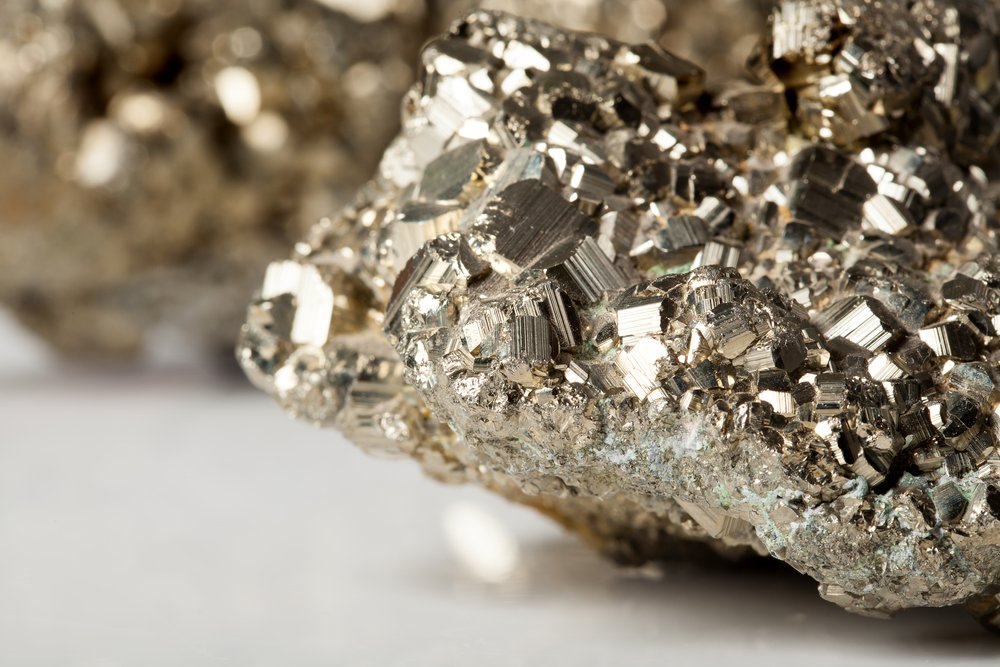
Pyrite is one of the cooler-looking sulfide minerals. It’s actually a personal favorite, especially when combined with other minerals like quartz or galena. It takes the form of a system of cubic crystals with a brassy color. In the past it was known as Fool’s Gold, owing to the fact that it occurs in many of the same places as native gold.
Of course, as I like to point out, it turns out that pyrite can contain gold. It’s been found to be richer than many of the ores used today, but it may take some time for a commercial method to catch up. Currently, it’s been extracted using a selective leaching process, but only experimentally.
Like galena and sphalerite, you’ll find pyrite across much of the state but the best concentration is in the southwest. Samples from Wisconsin that I’ve seen tend towards smaller crystals but in good-sized clusters mixed with other minerals. Your experience may vary on what you actually find, but it’s not the single large crystals found in some other places.
Pyrite is most often found alongside galena and sphalerite. It’s also a component of the schist in central Wisconsin.
7. Malachite
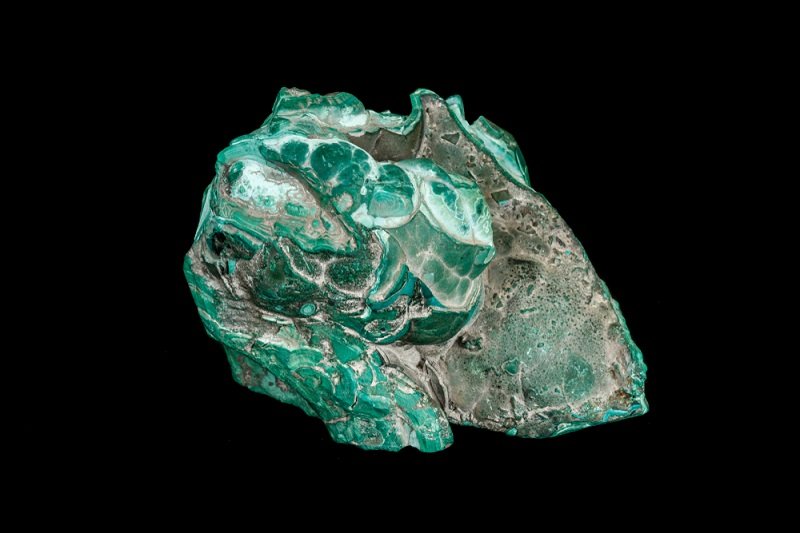
Malachite is one of the most famous stones. With its deep green color and alternating bands of dark and light color, it’s been a favorite of humans for thousands of years. In the past, it was also an important ore of copper, but these days it’s primarily dug up to sell to collectors and lapidaries. Malachite is among the more expensive semi-precious stones, and a good specimen can be worth a lot of money.
Malachite is often found in the same stone as azurite. Finding them blended together is common. Malachite and azurite share similar chemical structures, but malachite is oxidized. This means that azurite exposed to inclement weather for a long time can weather into malachite. It’s rarely a concern in collections, but it is something to keep in mind when deciding where to place a decorative piece.
Malachite from Wisconsin is often botryoidal and a common find in some copper ores. It usually appears as small green spheres inside hollows of other stones, but it can also be found on its own in larger pieces if you’re lucky. Some of it is large enough to appear in small veins, but this is an infrequent occurrence.
The area east of Mineral Point is the best starting place if you’re interested. This area is filled with mines and formal claims, so make sure you have permission before you start digging.
8. Kyanite
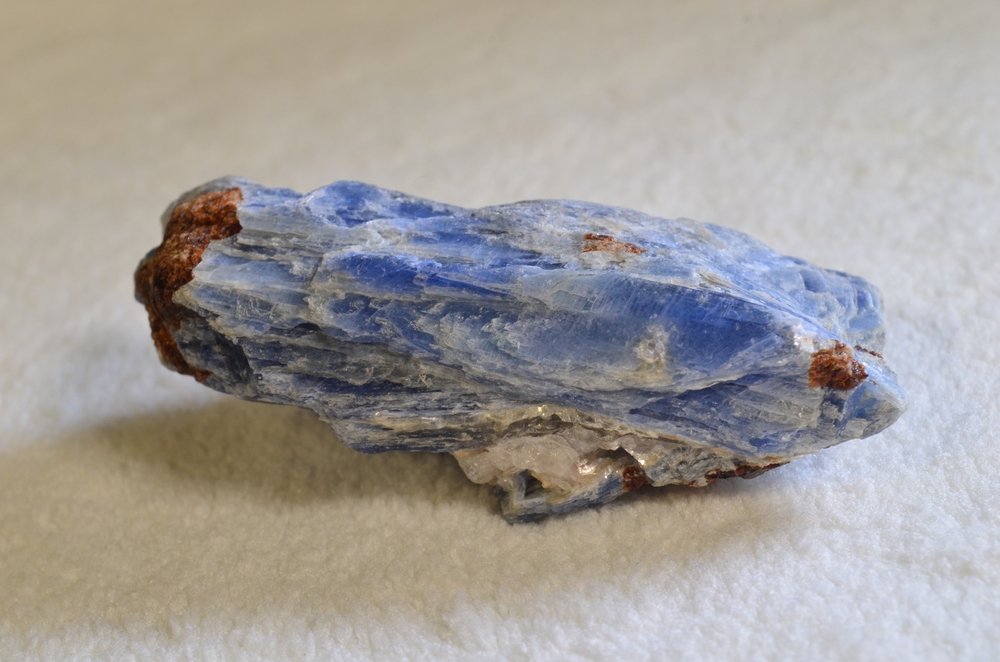
Kyanite is a deep blue silicate mineral that forms as both columnar clear crystals and in larger fans or blades. The large size of the blades makes it a favorite among collectors, and the columnar crystals can be cut into deep blue gemstones. These need special settings to protect them, but they’re seen often as a cheaper substitute for sapphire.
Kyanite has an interesting property that makes it distinct. If you try to scratch it across the crystals, it’s actually softer than if you scratch along the crystalline structure. This can be used as an easy way to determine if a stone is kyanite since it’s a very rare property. The hardness should be 6.5-7.0 along the crystals and 4.5-5.0 across them.
Wisconsin tends to bear kyanite in small amounts. Samples can be found in schists and in the southwest of the state. It doesn’t appear that gem-quality kyanite is found here but you may get lucky if you find a hotspot. Kyanite is a great one to collect since it’s easy to identify and looks great when cleaned up.
Most of the kyanite from Wisconsin seems to be found in Iron County with smaller deposits spread across the state.
9. Agate/Jasper/Chalcedony
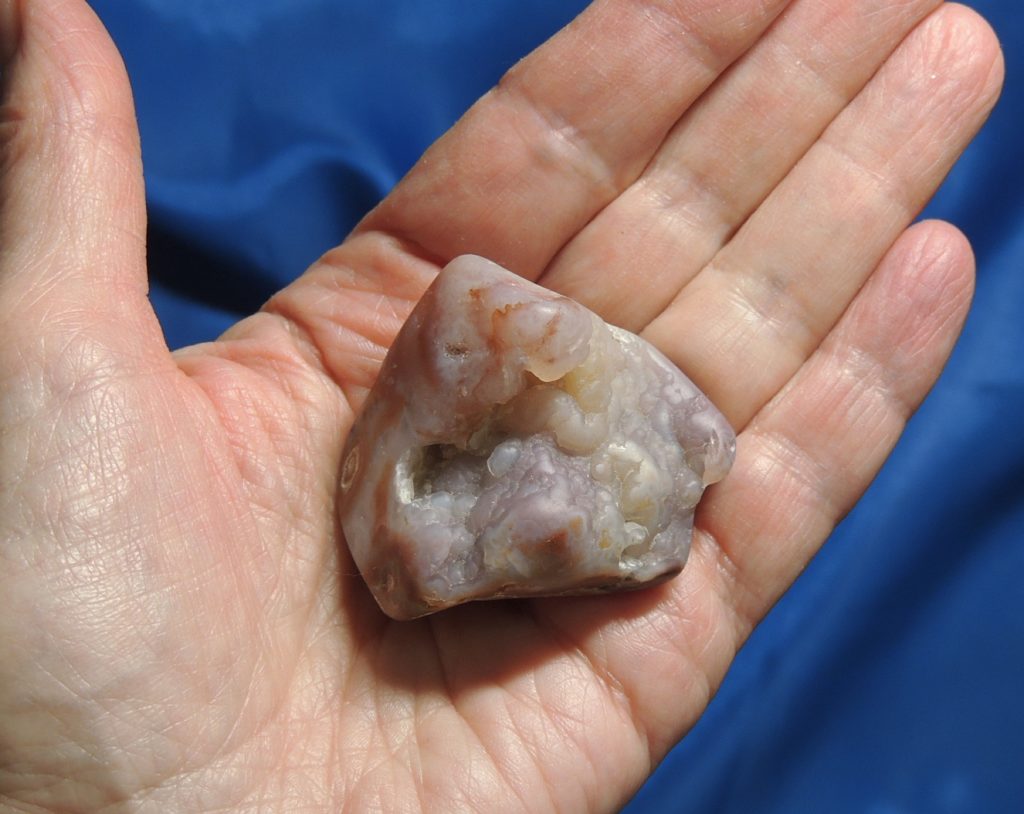
Agates, jasper, and chalcedony are common finds in the United States. I prefer not to argue about classification. In the end, they’re all cryptocrystalline silica with various impurities. Lake Superior Agates are a common find, with their alternating white and red bands giving them a distinctive appearance.
Jaspers are also found in the state, usually in red and orange with veins of white chalcedony running through them. The chalcedony that makes up the bulk of these stones is actually an incredibly fine intergrowth of quartz and moganite. Moganite shouldn’t be confused with pink beryl (aka morganite), it’s a polymorph of quartz that’s almost never found on its own. It requires thin section microscopes to see the actual structure, at our scale it simply appears as a glassy or waxy stone.
The more solid-colored chalcedonies aren’t found in Wisconsin to my knowledge. Between agate and jasper, most rockhounds will have their work cut out for them. While they’re common finds, they’re also among the most beautiful of stones. Especially to those of us who can appreciate how the inclusions affect their outer appearance.
In Wisconsin, agate and jasper will be found on the shores of the adjoining Great Lakes and in waterways throughout the state.
- Online rock and mineral club for collectors of all levels!
- Find community with like-minded rock and mineral enthusiasts.
- Monthly Giveaways!
- Free Access to Entire Digital Library of Products (annual memberships)


